
Gemini VII astronaut Frank Borman with the GC5 lightweight space suit. (NASA) |
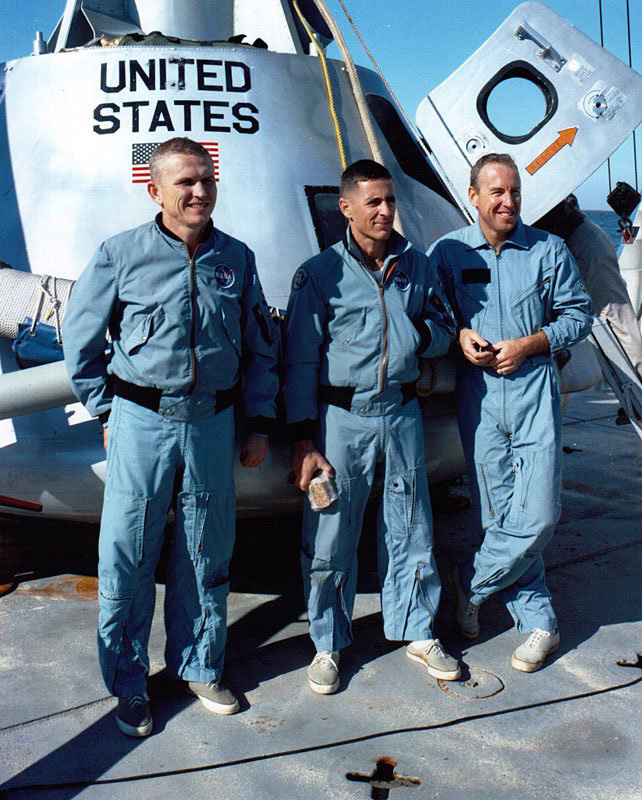
Apollo 8 astronauts Frank Borman, William Anders and James Lovell with NASA lightweight flight suit and jacket in the 1968. (NASA) |
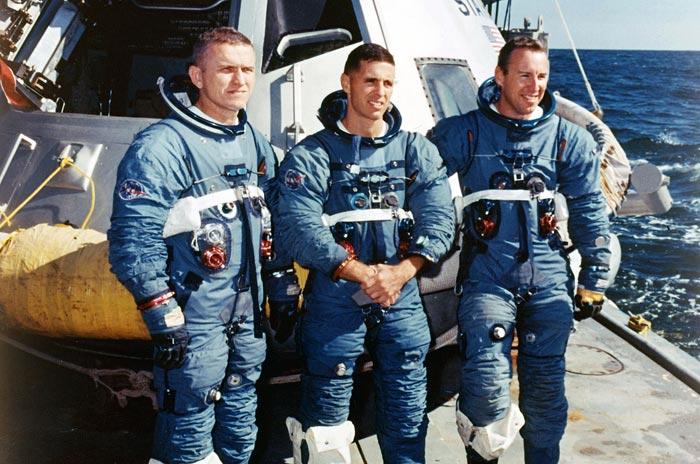
Apollo 8 astronauts Frank Borman, William Anders and James Lovell with NASA experimental space suit during post-splashdown recovery training. (NASA) |
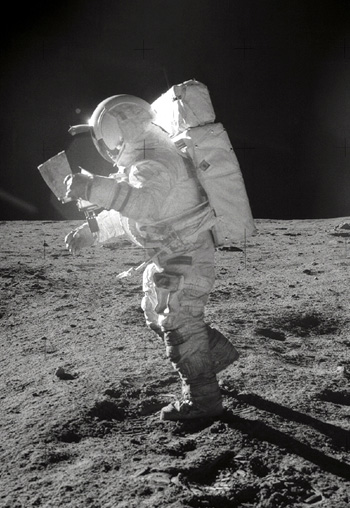
Apollo 14 astronaut Edgar Mitchell walking on the moon with A7L-073 EVA suit. (NASA) |
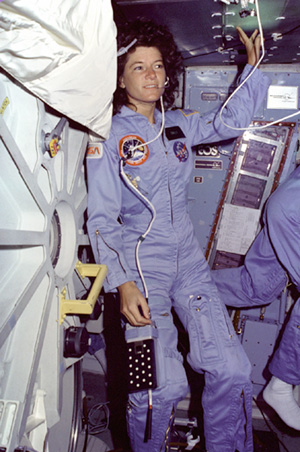
First US female astronaut Sally Ride. (NASA) |
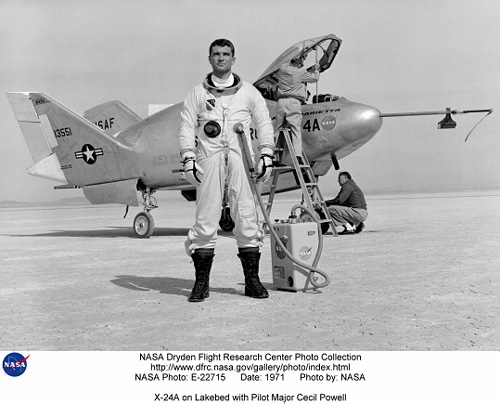
X-24A Test pilot Cecil Powell with A/P22S-4 full pressure suit. (NASA) |
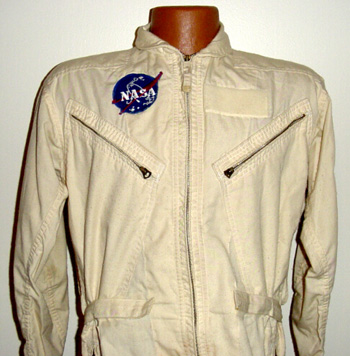
NASA Apollo flight suit |
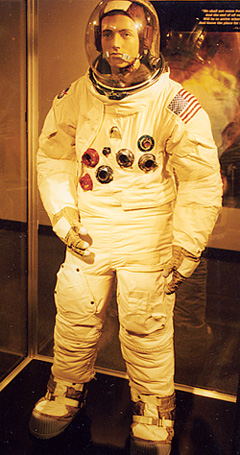
Apollo suit A7L |
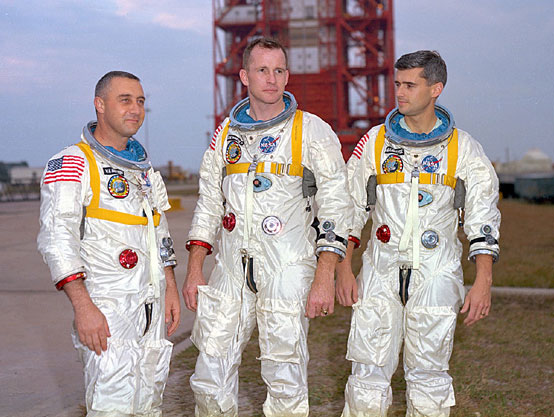
Apollo 1 crew Virgil "Gus" Grissom, Edward white and Robert Chaffee with AIC Block I space suits. (NASA) |
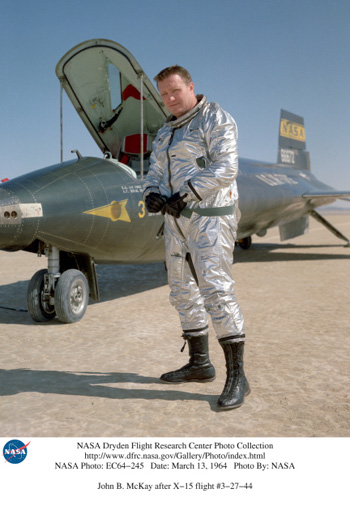
X-15 test pilot John McKay with A/P22S-2 full pressure suit (NASA) |
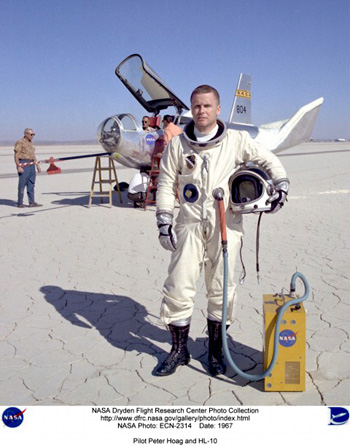
HL-10 test pilot Peter Hoag with A/P22S-4 full pressure suit. (NASA) |
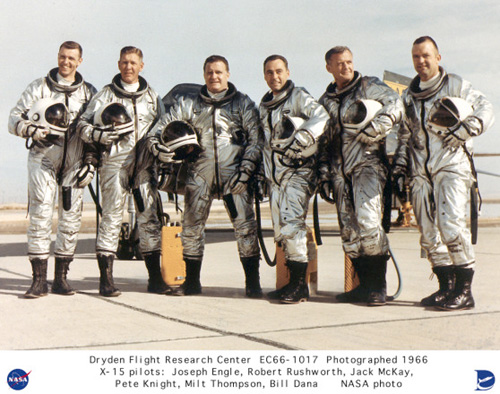
X-15 test pilots. (NASA) |
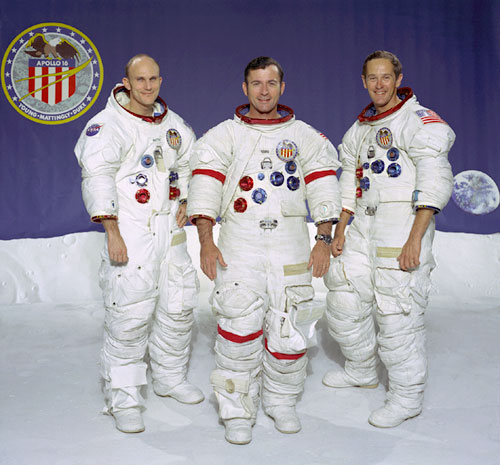
Apollo 16 crew Thomas Mattingly, John Young and Charles Duke with A7LB space suits. (NASA) |
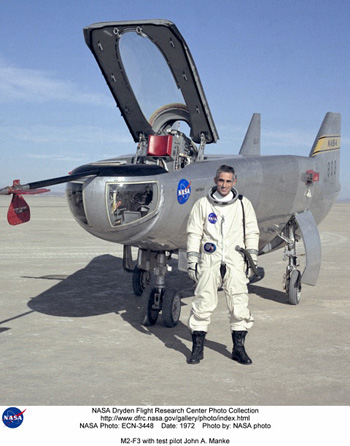
M2-F3 test pilot John Manke. (NASA) |

NASA test pilot during the 90s. (NASA) |
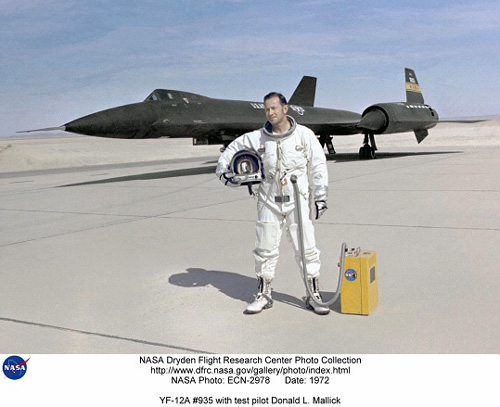
YF-12A test pilot Donald Mallick with S-970 full pressure suit. (NASA) |
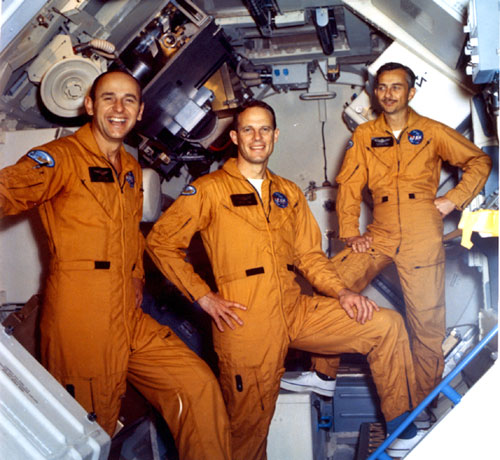
Skylab 3 crew Alan Bean, Jack Lousma and Owen Garriot. (NASA) |
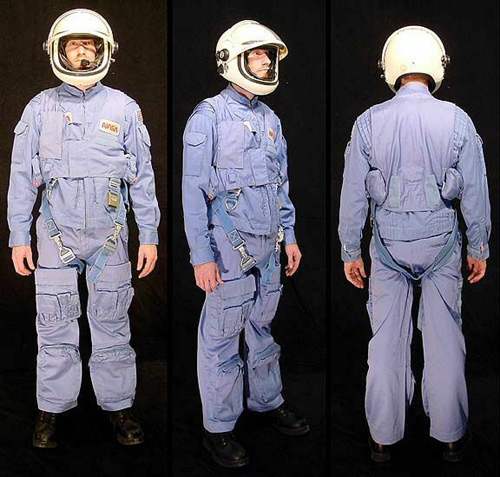
Space Shuttle not pressurized flight equipment used before the Challenger incident. (NASA) |
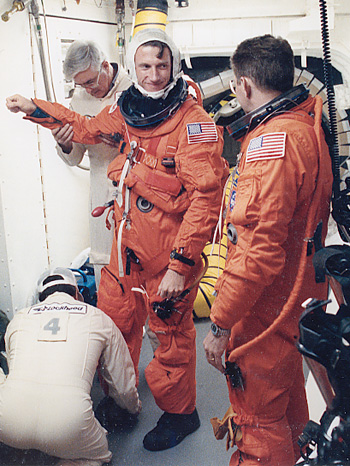
Space Shuttle astronauts with S-1032 partial pressure suits. (NASA) |
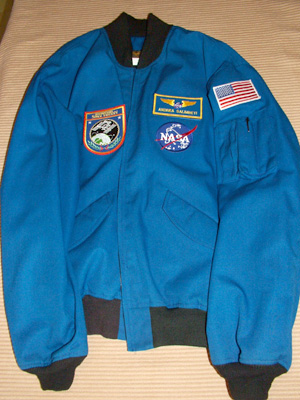
NASA fire-resistant flight jacket |
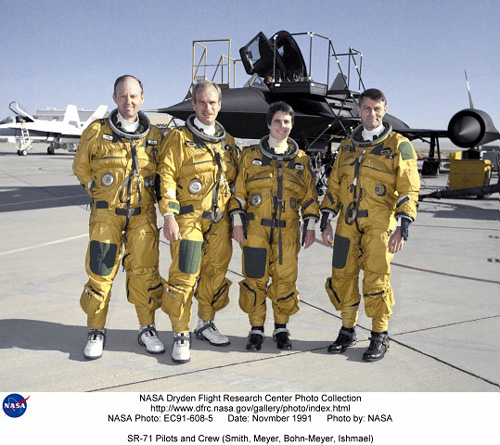
NASA SR-71 crew with S-1030 full pressure suits. (NASA) |
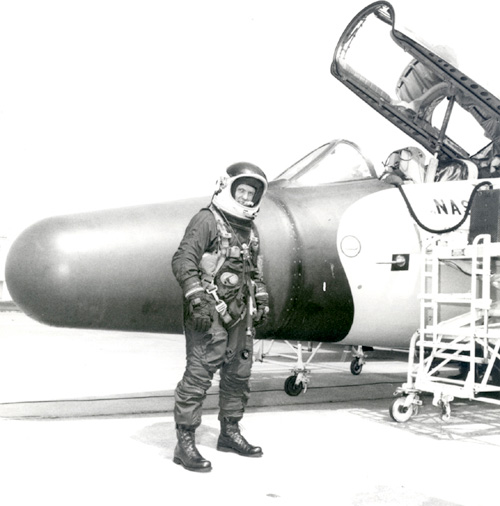
NASA astronaut Kathryn Sullivan near a WB-57F high-altitude research aircraft. (NASA) |
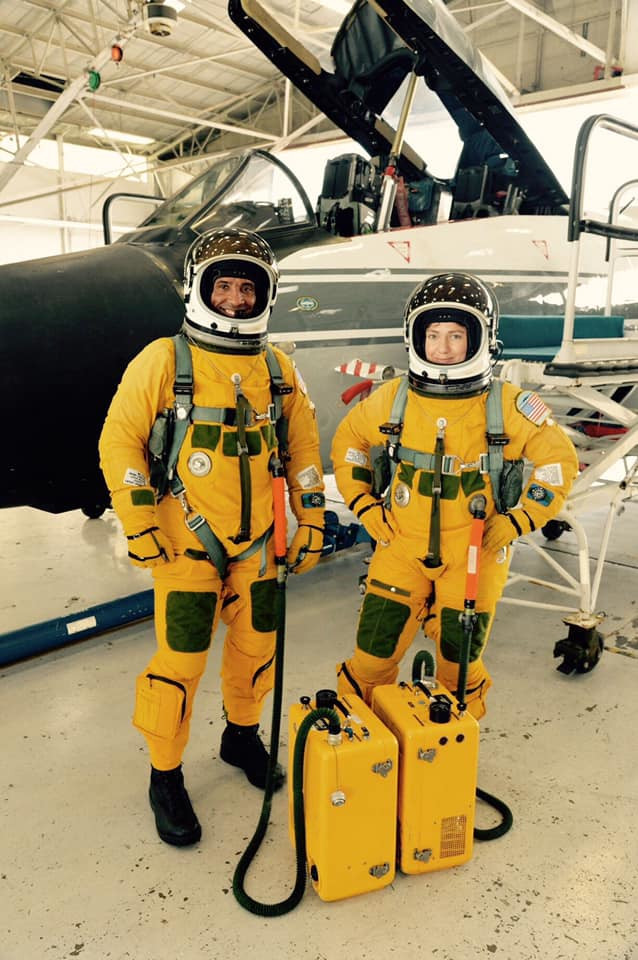
NASA uses a variant of the S-1034 without integrated harness or integrated floatation. and crews wear the PCU-15 over the PPA. (NASA) |
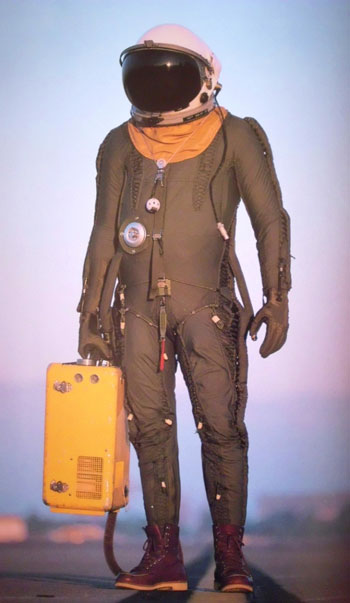
The U-2C pilots from a NASA detachment - AMES - were still flying the old, basic variant of the Dragon Lady in late '80s in meteo/particle-gathering missions.
They used the very last derivative of the Partial Pressure garment named the T-100 and made by David Clark Co.
Here being worn together with a more comfortable Full Pressure helmet, the same as used by TR-1 pilots. (NASA) |
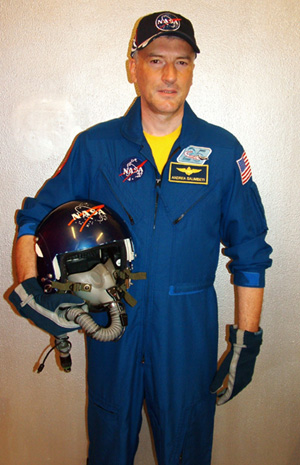
NASA fire-resistant flight suit |
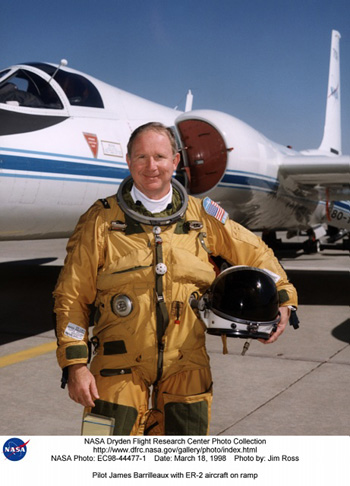
NASA ER-2 pilot James Barrifeaux with S-1031 full pressure suit. (NASA) |
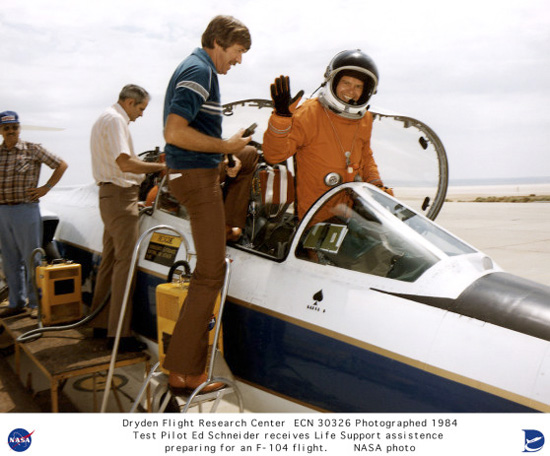
NASA F-104 pilot Ed Schneider. (NASA) |

Space Shuttle Commander with S-1035 full presure suit. (NASA) |
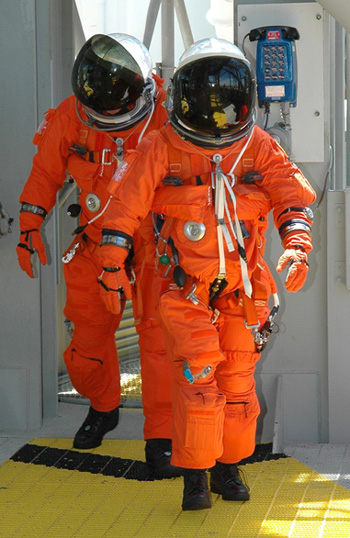
NASA astronauts on Space Shuttle launch pad 39B with S-1035 full pressure suits (NASA) |
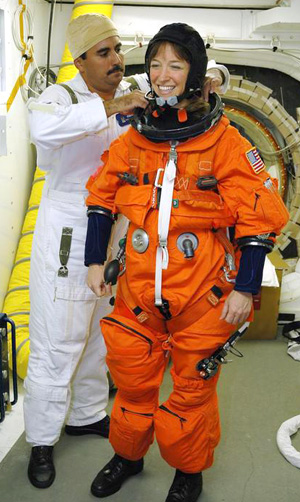
STS-121 Mission Specialist Lisa Nowak with S-1035 full pressure suit. (NASA) |
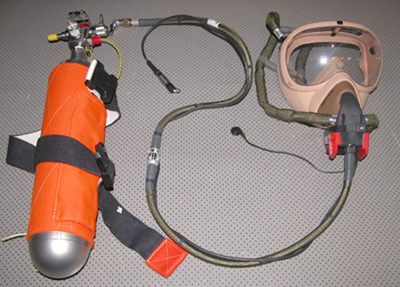
NASA Portable Breathing Assembly used on Space Shuttle and Space Station. |
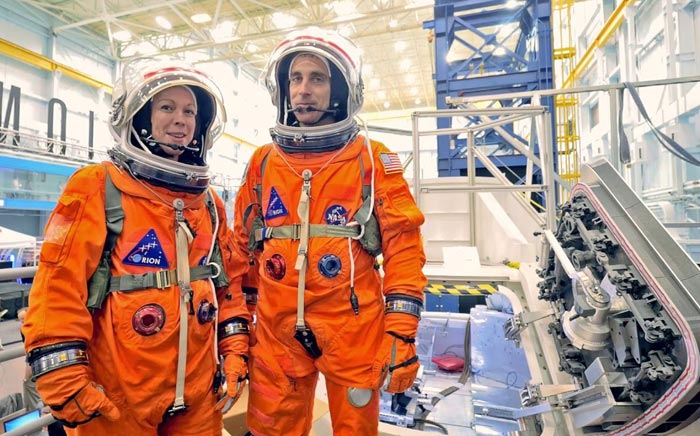
New NASA MACES space suit.
It is a suit intended for use in Orion. Because of mass and volume constraints, NASA wanted to be able to use ACES (the suit intended for ascent and entry during Space Shuttle missions) both for ascent/entry periods of Orion missions and also for EVA (space walks). MACES, therefore, is a hybrid of the orange Space Shuttle escape suit and the white ISS EVA suit.(NASA)
|
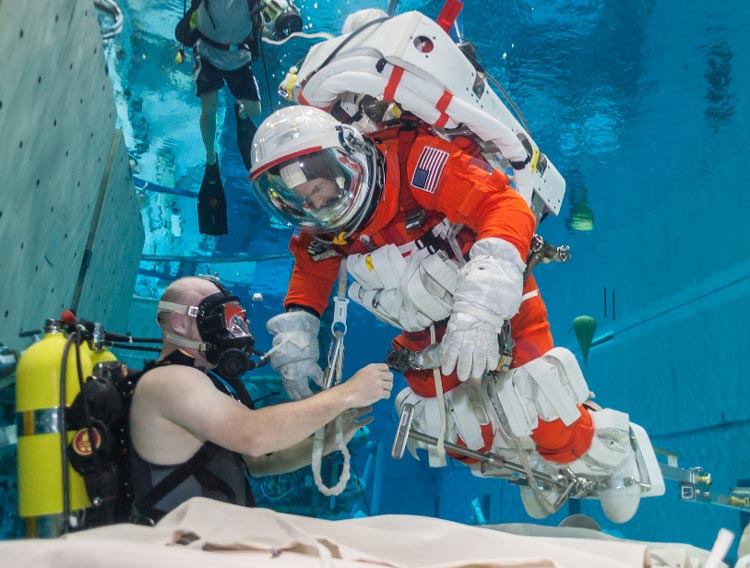
New NASA MACES space suit during evaluation in the Neutral Boyancy Simulator. (NASA)
|
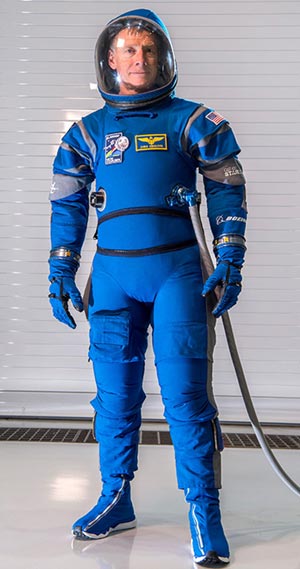
Boeing Company new pressure garment that NASA crews and commercial passengers will wear for flights on board its CST-100 Starliner spacecraft, starting as soon as 2018. (Boeing)
|
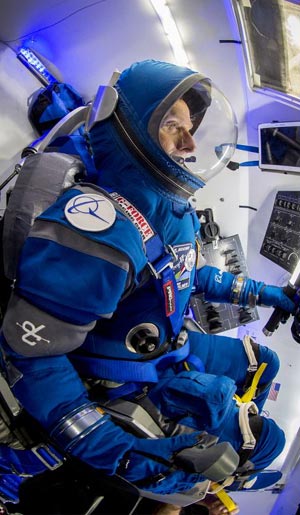
The Starliner suit , which features Reebok-inspired footwear and touchscreen compatible gloves, was designed to be lighter and less bulky than prior launch and entry outfits. (Boeing) |
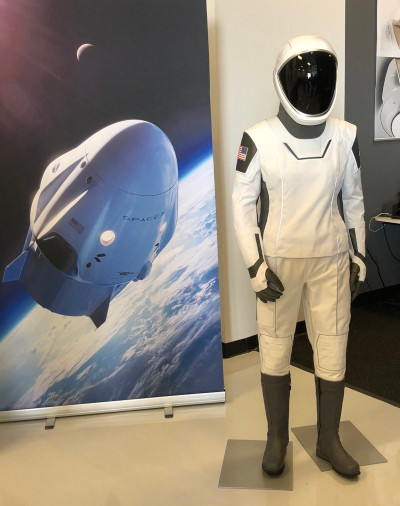
SpaceX Company new IVA garment that NASA crews and commercial passengers will wear for flights on board its Crew Dragon spacecraft, starting as soon as 2019. (SpaceX)
|
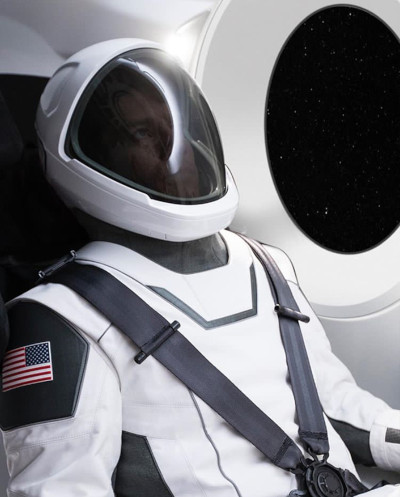
SpaceX wanted to ensure optimal mobility inside Crew Dragonís cabin while still allowing for operations in the in the event of extreme emergencies and loss of cabin pressure on-orbit. (SpaceX) |